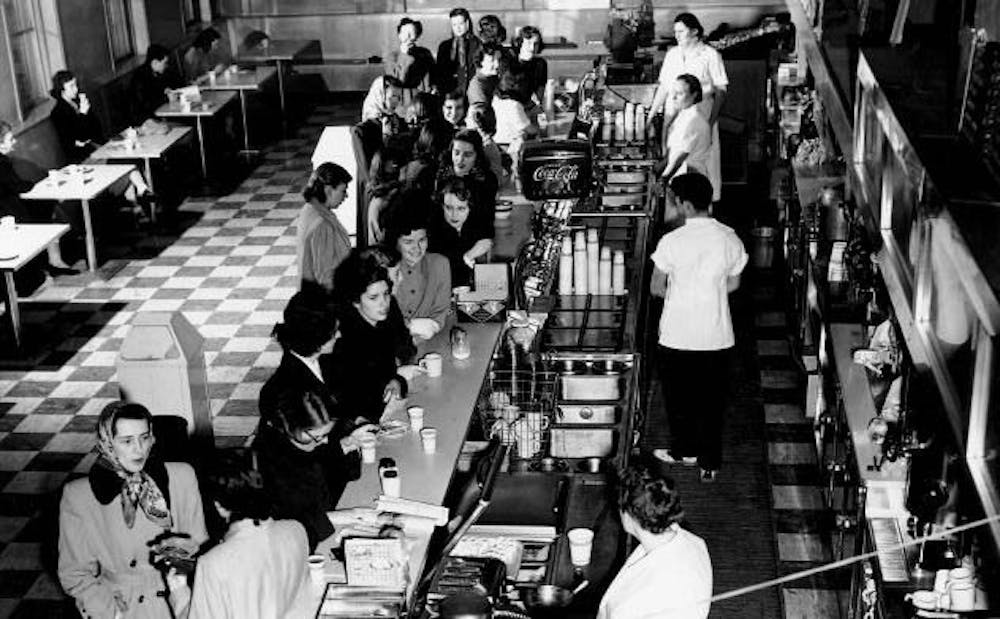Editor's note: This story is the fourth entry in a series called Flashback, which The Chronicle will be running online weekly through the end of the summer. We welcome readers' input about old stories they would like to see featured.
Want to crack open a cool Coca-Cola on a hot summer day? Check out the East Campus Dope Shop.
Throughout the twentieth century, East Campus was home to the “Dope Shop.” Its name came from the slang term “dope” which was used for cola drink—a reference to its thick consistency or to the popular belief that the drink contained cocaine.
Founded in 1916, the original Dope Shop—located in Epworth residence hall—offered little more than Coca-Cola, desserts, nuts and fruit. However, it was converted into a luncheonette in the 1940s and became a modern eatery by 1981 known for its milkshakes, hamburgers and fries.
Although the Dope Shop changed locations throughout its many years on East Campus, it remained central to student life. So when the University announced in 1985 that the Dope Shop would be replaced with a yogurt parlor, the Duke community was up in arms over the decision. On June 13, 1985, The Chronicle published an article that covered the subsequent protest.
“Roughly 50 University employees, faculty members and students gathered in the East Campus Union Monday to protest the proposed conversion of the East Campus Dope Shop into a yogurt parlor run the franchise This Can’t Be Yogurt, Inc.,” Chronicle writer Ed Farrell stated in the article. “At a meeting with Joe Pietrantoni, assistant University business manager, they opposed the change, calling for preservation of the current situation or restoration of the Dope Shop to its former status.”
Pietrantoni held the town hall meeting to address the community’s grievances over the announcement. At the meeting, the protestors shared specific criticisms of the yogurt franchise, such as the undercutting of local businesses and a non-commercial atmosphere, Farrell wrote.
“They felt it would harm the sense of community which is an attractive part of East Campus,” Pietrantoni said, noting that protestors objected to the elimination of the Dope Shop rather than the inclusion of the yogurt bar.
The protestors’ efforts would eventually come to fruition. On July 4, 1985, The Chronicle published another article that announced the University’s decision to keep the Dope Shop open.
Pietrantoni cited two petitions signed by 254 employees, faculty members and students as the reason for the University’s change of heart. One petition stated that the closing of the Dope Shop would mark the “end of a Duke tradition.”
“No one will drown his sorrows in a low-cal carton of yogurt on East Campus in the near future,” Douglas Mays summed it up in the article.
Get The Chronicle straight to your inbox
Signup for our weekly newsletter. Cancel at any time.

